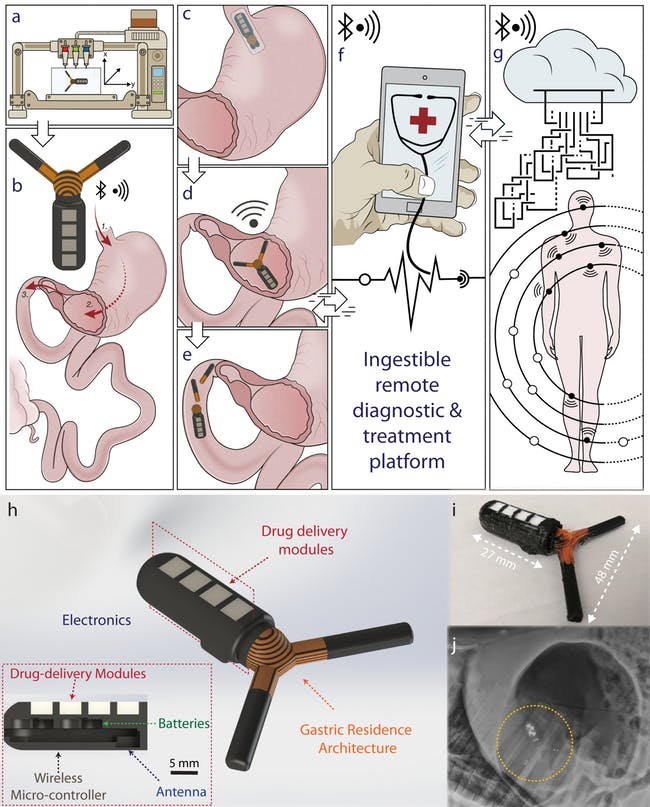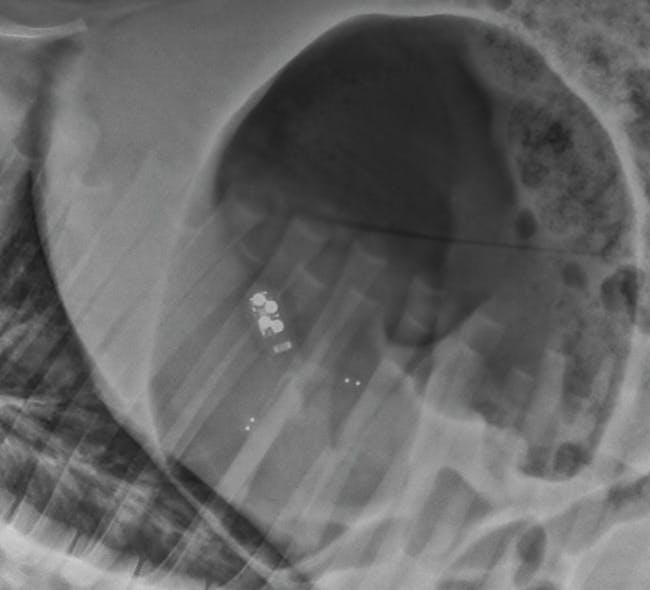Could you swallow a 3D printed pill that collects data from the inside of your stomach? For two years, a team of researchers based at the Massachusetts Institute of Technology (MIT) have been developing a mini device capable of just that.
Called “Gastric Resident Electronics” (GREs) these pills are designed to sit in the stomach for over a month, sensing the development of infections, or the body’s response to medication, and even administering therapeutic drugs.
With built in wireless communications, the pills transmit data to electronic devices, which can be used to monitor and treat various health conditions.
With the emergence of many electronic devices capable of keeping an eye on our well-being, is this the next natural step forward from the likes of pedometers and pulse monitors? Or is it just one FitBit too far?
Bluetooth enabled pills
The GRE devices produced by MIT are FFF 3D printed using a Hyrel 3D System 30M, from a combination of PLA and NinjaFlex filaments – PLA for the body and NinjaFlex for the “antennas” that give the device a Y-shaped appearance.
A custom built Aerotech AGS 15000 system is then used to add an epoxy coating and conductive traces to the device, for the integration of Bluetooth electronics and coin cell batteries.
Once completed, the antennas of the GRE are folded, fitting the device into a 000 capsule – just shy of 2.5 cm long. In addition to making it easier to swallow, this capsule protects the GRE until it makes it to the stomach.

Needle and surgery free medical treatment
Once within the stomach, gastric acids dissolve the capsule, and the GRE antennas are allowed to expand.
Over time, the GRE itself is also gradually digested. In one test, the device successfully lasted 36 days before breaking down, and maintained wireless communications for a total of 15 days, giving consistent readings of body temperature.
In addition to sensing, this early-stage GRE demonstrated the ability to slowly release drugs over a set period of time – a feature that could be useful when administering long-term medication like contraceptives.
The research team behind the device believe that this little device is a realization of “next-generation remote diagnostic and automated therapeutic strategies.”

Uniting the body and the digital domain
According to the study’s conclusions, “Ultimately, the ingestible gastric residence electronics provides a needle and surgery free approach to synergistically integrate biomedical electronic devices, the human body, and the digital domain.”
Full results of the study are published in the paper “3D‐Printed Gastric Resident Electronics,” for Advanced Materials Technologies. The paper is co-authored by Yong Lin Kong, Xingyu Zou, Caitlin A. McCandler, Ameya R. Kirtane, Shen Ning, Jianlin Zhou, Abubakar Abid, Mousa Jafari, Jaimie Rogner, Daniel Minahan, Joy E. Collins, Shane McDonnell, Cody Cleveland, Taylor Bensel, Siid Tamang, Graham Arrick, Alla Gimbel, Tiffany Hua, Udayan Ghosh, Vance Soares, Nancy Wang, Aniket Wahane, Alison Hayward, Shiyi Zhang, Brian R. Smith, Robert Langer and Giovanni Traverso.
Nominate your Research Team of the Year in the 2019 3D Printing Industry Awards now.
For all of the latest updates, subscribe to the 3D Printing Industry newsletter, follow us on Twitter and like us on Facebook.
Join 3D Printing Jobs to find your next opportunity.
Featured image shows the design of MIT’s Gastric Resident Electronic smart pill. Image via Advanced Materials Technologies


